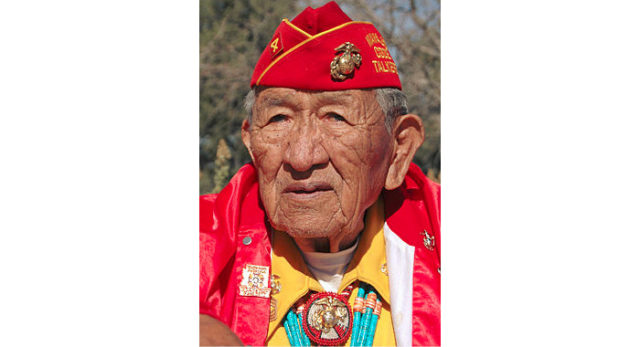The Navajo, presently being hit hard by coronavirus, served as code talkers for the US Marines during WWII. They share a common Asian mainland origin with Japanese in their ancient migration history.
The Navajo have been in the news of late owing to their elevated coronavirus case-counts. On May 10, the Navajo Nation passed New York in having the highest infection rate per capita among US states. Then, 1798 Navajo of 100,000 had the virus, compared with 1751 New Yorkers (Huffington Post, May 12). Their reservation population in 2010 was 173,667. Today, the Navajo Nation maintains its leading per-capita infection rate.
The Navajo Nation is a 27,000 square-mile desert in northeast Arizona that spills over the Four Corners boundaries into Utah, Colorado, and New Mexico. In size, it is comparable to West Virginia. The Nation’s location hasn’t helped it in recent months, for COVID-19 case counts have been spiking in three of the Four Corners states (AZ, UT, NM).
The Navajo merit profiling here because of the perspective their plight provides on the two leading issues of the day, the coronavirus pandemic and inequality in American society. As has been highlighted by the George Floyd protests, disparities are mainly discussed in Black/White terms. Native Americans tend to be forgotten. Yet public health professionals know that the poorest of the poor are Native Americans. They are ignored because they are lacking in numbers and many live in rural settings. Their populations are low owing to their historical decimation by European diseases and genocide.
The plight of the Navajo holds special significance to Nikkei because of our parallel histories, and because of their close genetic relationship to us. Japanese Americans will find common ground with the Navajo in their historic detainment at Bosque Redondo—effectively an internment camp. The difference is that the Navajo had to walk 400 miles to the camp from their homes in the 1860s, under the guns of the US Army. That camp would later be among those studied by Hitler, seeking an efficient way to exterminate Jews. During WWII, young Navajo men—like Nisei—used their home language to aid the US. The Navajo were “code talker” radio operators for the Marines. Their words were unintelligible to listening Japanese forces.
The Navajo continued their specialized military service through the Korean War, and early in the Vietnam War. It is for this reason that in June, South Korea donated 10,000 N95 face masks and 3.9 tons of supplies to them.
The Irish have similarly donated substantively to the Navajo and Hopi—another tribe that lives within the boundaries of the Navajo Nation—totaling $670,000 as of May 7 (ABC News). The donations are in remembrance of a donation of $170 the Choctaw tribe, Oklahoma, gave the Irish in 1847. The Choctaw had their own Trail of Tears (1830). They empathized with the Irish who were starving during their Great Famine.

How are the Navajo related to Nikkei? The relationship is highlighted by any internet search on the Navajo. Scanning their faces will show occasional faces that are indistinguishable from those of ethnic Japanese. That similarity originates from the ancient migration history of the ancestors of the Navajo out of mainland Asia.
That path is most easily traced linguistically. The language spoken by the Navajo code talkers is an Athabascan language. Its present-day speakers span Alaska and western Canada, with scattered populations dotting the Oregon and California coasts to the American Southwest. The native term for the Athabascan language family is Na-Dene.

Linguists classify Na-Dene in the Dene-Yeniseian language family. The term Yeniseian comes from the Yenisei River, which drains Lake Baikal—the distinctive large lake of Siberia—to the Arctic Ocean.
Many Yeniseian languages were previously spoken in the Yenisei Valley. Today, Ket is the sole surviving representative.
The Lake Baikal region is the same one that Japanese likely descend from (Sansei Journal, “From Baekje to Lake Baikal,” June 2017). From that distant origin, the ancestors of the Navajo made their way to the American Southwest, where they preceded the arrival of Spanish colonists in 1598. They regularly fought the Spanish before the landscape of the present-day Navajo Nation became a part of the United States. From the Spanish, the Navajo learned to raise sheep and goats. Those animals were their primary livelihood until after WWII, when tourism, mining, and logging diversified their economy.
To return to the present, coronavirus is a huge problem on the Navajo reservation mainly because of rural poverty. Many homes lack running water. All have only limited access to grocery stores and healthcare. The median income is about $20,000 per year.








